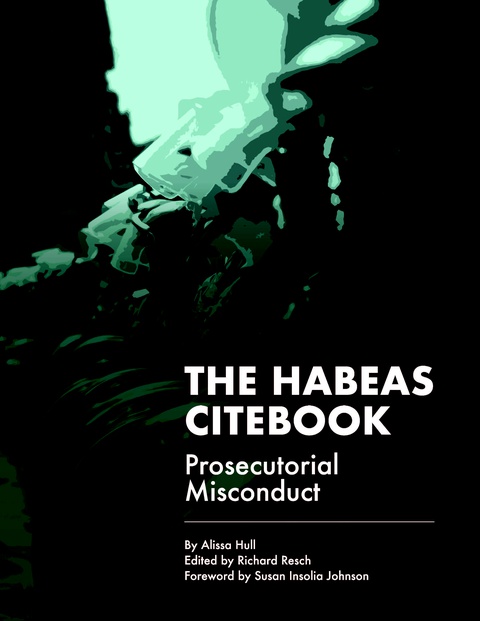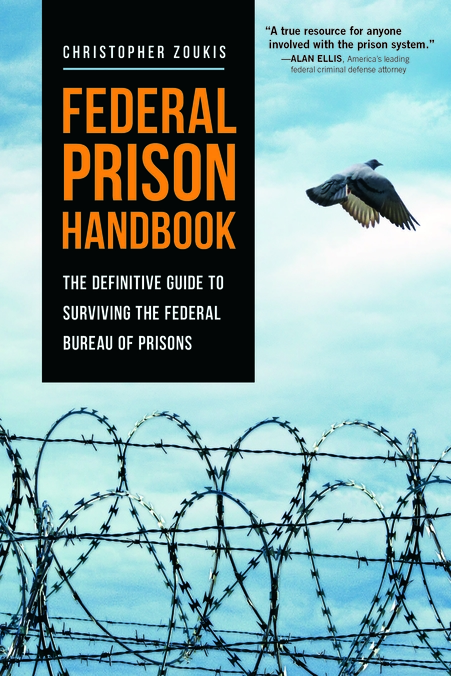Colorado Supreme Court Announces Police Facilitating Drug-Detection Dog’s Entry Into Vehicle by Opening Door During Traffic Stop Without Probable Cause Is Unconstitutional Search in Violation of Fourth Amendment
The Supreme Court of Colorado held that the police conducted an unreasonable search under the Fourth Amendment of a defendant’s vehicle during a traffic stop when they facilitated entry into the vehicle by a drug-sniffing dog without probable cause.
Tien Dinh Pham was observed leaving an area police alleged to be high-crime, so they decided to follow him. After he failed to properly signal a lane change, officers initiated a traffic stop for that traffic infraction. Officers ordered him out of the vehicle, leaving the door partially open. An officer conducted a brief pat-down of Pham and directed him to a different location farther away from the vehicle.
Officer Kyle Winters then deployed a drug-detection dog and directed it to conduct a “free air sniff” of the exterior of Pham’s vehicle. When the dog reached the open driver’s side door, Winters partially closed it to allow the dog and him to maneuver around it; afterward, he reopened the door enough to allow the dog to enter the vehicle, placing its head and front paws inside. Once inside, the dog alerted to the presence of drugs. Winters walked the dog around the exterior of the vehicle again, but it did not alert again until it reached the open door.
Based on the dog’s alert, officers on the scene searched the vehicle and found suspected meth, cocaine, heroin, drug paraphernalia, and two handguns. Pham was placed under arrest.
The Jefferson County District Attorney charged Pham with “nine counts, including possession with intent to manufacture or distribute a controlled substance, possession of a weapon by a previous offender, and possession of drug paraphernalia.” He moved to suppress the evidence as the result of an illegal search.
The trial court granted Pham’s motion, effectively ending the prosecution, on the grounds that (1) officers lacked sufficient reason to extricate him from his vehicle for an illegal lane change and (2) the dog performed a warrantless search of the inside of Pham’s vehicle without probable cause in violation of the Fourth Amendment. The prosecution filed an interlocutory appeal.
Analysis
The Court began its analysis by noting that the Fourth Amendment protects people against unreasonable searches and seizures. It provides: “The right of the people to be secure in their persons, houses, papers, and effects, against unreasonable searches and seizures, shall not be violated, and no Warrants shall issue, but upon probable cause, supported by Oath or affirmation, and particularly describing the place to be searched, and the persons or things to be seized.”
A vehicle is undoubtedly an “effect” for purposes of the Fourth Amendment. United States v. Jones, 565 U.S. 400 (2012). The Court noted that a Fourth Amendment search occurs when the government “physically occupies private property, including a vehicle, in order to obtain information.” Id. [Editor’s note: That is, Jones clarified that a person’s Fourth Amendment rights can be violated when the actions of government officials constitute common law trespass, not only when they violate a person’s reasonable expectation of privacy under Katz v. United States, 389 U.S. 347 (1967).]
The Supreme Court has instructed that “probable cause” is the “minimum requirement for a reasonable search permitted by the Constitution.” Chambers v. Maroney, 399 U.S. 42 (1970). Probable cause to search exists when “the facts available to [a law enforcement officer] would warrant a [person] of reasonable caution in the belief” that contraband or evidence of a crime is present. Florida v. Harris, 568 U.S. 237 (2013) (quoting Texas v. Brown, 460 U.S. 730 (1983) (plurality opinion)). Courts evaluate the totality of the circumstances in making probable cause determinations. Id. Importantly, the Supreme Court explained that it is a “fluid concept—turning on the assessment of probabilities in particular factual contexts—not readily, or even usefully, reduced to a neat set of legal rules.” Illinois v. Gates, 462 U.S. 213 (1983).
Regarding the issue of police instructing a motorist to exit their vehicle during a traffic stop, the Supreme Court has instructed that based on concern for officer safety, officers may, “consistent with the Fourth Amendment, exercise their discretion to require a driver who commits a traffic violation to exit the vehicle even though they lack any particularized reason for believing the driver possesses a weapon.” New York v. Class, 475 U.S. 106 (1986). The Supreme Court has characterized the requirement for a motorist to exit their vehicle as a “mere inconvenience” relative to the legitimate concern for the safety of the police, according to the Court. Pennsylvania v. Mimms, 434 U.S. 106 (1977).
The Court stated that a drug-detection dog’s sniff of the interior of a home and its curtilage is “indisputably subject to Fourth Amendment protection,” i.e., the sniff is a Fourth Amendment search. See Florida v. Jardines, 569 U.S. 1 (2013). Similarly, the Fourth Amendment protects the interior of a vehicle, so a search of it requires probable cause. Class. However, both the Supreme Court and the Colorado Supreme Court have concluded that a dog sniff of the exterior of a vehicle during an otherwise lawful traffic stop is not a Fourth Amendment search. Illinois v. Caballes, 543 U.S. 405 (2005); People v. Mason, 310 P.3d 1003 (Colo. 2013). But the Tenth Circuit has ruled that if police facilitate a drug-detection dog’s entry into a vehicle prior to establishing probable cause, the Fourth Amendment is implicated. Felders v. Malcom, 755 F.3d 870 (10th Cir. 2014).
In Felders, video showed that a state trooper opened the passenger doors of a vehicle during a traffic stop, removed the passengers, and purposefully left a door open, preventing one of the passengers from closing the door. A drug-detection dog entered the vehicle through the open door. No contraband was located, and the passengers filed a civil action, claiming that the police searched the vehicle in violation of the Fourth Amendment.
The Felders Court concluded that the police did not have probable cause for the dog sniff at issue. It explained, “officers cannot rely on a dog’s alert to establish probable cause if the officers open part of the vehicle so the dog may enter the vehicle or otherwise facilitate its entry.” And it added, “[A] trained dog’s alert from areas where the motorist has no legitimate expectation of privacy—the exterior of the car or the interior of the car that the motorist has voluntarily exposed to the dog—provides sufficient probable cause to search the interior. But where there is evidence that it is not the driver but the officers who have ‘create[d] the opportunity for a drug dog to go where the officer himself cannot go,’ the Fourth Amendment protects the driver’s right to privacy to the interior compartment until the dog alerts from the exterior of the car.” Quoting United States v. Lyons, 486 F.3d 367 (8th Cir. 2007).
Turning to the present case, the Court stated that it must decide “when a dog sniff of a vehicle’s interior rises to the level of a search warranting Fourth Amendment protection.”
As an initial matter, the Court concluded that the trial court erred in ruling that the police improperly removed Pham from his vehicle during the lawful traffic stop, citing Mimms.
Next, the Court addressed the question of whether the police conducted a search when the drug-detection dog entered Pham’s vehicle to conduct a sniff. Adopting the reasoning of Felders, the Court ruled that the police conducted a Fourth Amendment search because Winters facilitated the drug-detection dog’s entry into the vehicle by reopening the door so that the dog could conduct a sniff of the vehicle’s interior.
Finally, the Court turned to the issue of whether police had probable cause for searching the interior of Pham’s vehicle. Probable cause exists when the “facts available to a police officer would warrant a person of reasonable caution to believe that contraband or evidence of a crime is present,” the Court reiterated. Harris. The Court summarized the relevant facts as follows: (1) Pham was allegedly in a high-crime area, (2) there was no indication he was involved in criminal activity, (3) he was stopped for an improper lane change, (4) police were not aware of any contraband in Pham’s vehicle prior to the drug-detection dog entering its interior, and (5) the dog alerted only after it entered the vehicle. Based on these facts, the Court ruled that “the officers conducted the search at issue without the requisite probable cause.” Thus, the Court held the police violated Pham’s Fourth Amendment rights.
Conclusion
Accordingly, the Court affirmed Pham’s motion to suppress the evidence discovered inside his vehicle and remanded to the trial court for further proceedings consistent with its opinion. See: People v. Dinh Pham, 562 P.3d 894 (Colo. 2025).
Editor’s note: Interestingly, the Court did not discuss Jones’ common law trespassory framework, in which a search for Fourth Amendment purposes is defined by physical intrusions into protected areas to obtain information that constitutes trespass under the common law. It arguably deserved some discussion since it seemingly provides a relatively straightforward path to concluding the drug-detection dog’s sniff inside the vehicle was an unconstitutional search. That is, the dog’s entry into the interior of the vehicle, facilitated by the officer’s intentional act of reopening the door, was an unauthorized physical intrusion into a constitutionally protected area since it was not based on consent or probable cause, and interfered with Pham’s possessory interest in the vehicle. Thus, the facts fit the classic definition of a common law trespass, resulting in a search in violation of the Fourth Amendment.
The Fourth Amendment
The Fourth Amendment to the U.S. Constitution protects individuals from unreasonable searches and seizures by the government. Whether a government action qualifies as a search or seizure determines if the Fourth Amendment applies, requiring a warrant or a recognized exception. The Supreme Court has developed two distinct tests to define a search, reflecting both modern privacy concerns and purported historical protections.
In Katz v. United States, 389 U.S. 347 (1967), the Supreme Court appeared to shift focus from physical intrusions to privacy expectations, leading many in the legal community to conclude that the trespass test was replaced. However, to the surprise of many observers, in United States v. Jones, 565 U.S. 400 (2012), the Supreme Court clarified that the trespass test never went away, explaining that the Katz test supplements rather than replaces the trespass-based Fourth Amendment framework.
The Katz Expectation
of Privacy Test
Established in Katz v. United States, 389 U.S. 347 (1967) (Harlan, J., concurring), the Katz test expanded the scope of Fourth Amendment protection beyond physical intrusions into constitutionally protected areas. It holds that a search occurs when the government violates a person’s reasonable expectation of privacy. This test has two components: (1) Subjective Expectation—the individual must exhibit an actual expectation of privacy and (2) Objective Reasonableness—society must recognize that subjective expectation as reasonable.
For example, in Kyllo v. United States, 533 U.S. 27 (2001), the Supreme Court ruled that using a thermal imaging device to detect heat from a home constituted a search for Fourth Amendment purposes. Although no physical intrusion occurred, the use of the device violated the homeowner’s reasonable expectation of privacy in the sanctity of their home.
The Jones Common Law
Trespass Test
In Jones, the Supreme Court reaffirmed the Fourth Amendment’s originalist foundations by ruling that a physical intrusion by the government into a constitutionally protected area—such as a person’s body, house, papers, or effects—qualifies as a search if done to obtain information. The Jones Court ruled that attaching a GPS tracker to a vehicle and monitoring its movements constituted an unconstitutional search because the government had physically trespassed on private property (the car) to obtain data.
This principle was extended in Florida v. Jardines, 569 U.S. 1 (2013), in which the Supreme Court found that using a drug-sniffing dog on a homeowner’s porch violated the Fourth Amendment because the officers had trespassed into the home’s curtilage—a traditionally protected area. Together, these cases clarified that the Fourth Amendment’s protections against government overreach remain firmly rooted in property-based boundaries, even in the modern high-tech surveillance era.
Interaction and Application:
A Dual Framework
The Supreme Court has emphasized that the Katz and Jones tests are independent and complementary. A government action can be a search under either test—or both—depending on the circumstances. In Jones, Justice Scalia clarified that the Katz test “added to, not substituted for” the traditional trespass-based approach. This means:
Trespass Alone Suffices: If the government physically intrudes into a constitutionally protected area to gather information, it is a search, regardless of privacy expectations. Jones.
Privacy Violation Suffices: If no physical intrusion occurs but a reasonable expectation of privacy is breached, it is still a search. Katz.
For instance, in Carpenter v. United States, 138 S. Ct. 2206 (2018), the Supreme Court held that accessing cellphone location records was a search under the Katz test due to the significant privacy interest in such data, despite there being no physical trespass. Conversely, in Jones, the Supreme Court relied solely on the trespass test.
This dual framework ensures robust Fourth Amendment protection. Jones addresses tangible intrusions, reflecting the Fourth Amendment’s historical focus on physical property rights. In contrast, Katz addresses modern surveillance techniques—such as electronic monitoring—that do not involve physical trespass but instead violate reasonable expectations of privacy.
Courts apply these tests as the facts dictate. If either test is met, the Fourth Amendment is triggered, and the government must justify its action. The tests do not compete or override each other; they coexist to safeguard against both traditional and contemporary forms of government overreach. Thus, the Supreme Court’s current doctrine recognizes that a search under the Fourth Amendment occurs through either a physical trespass or a privacy violation.
As a digital subscriber to Criminal Legal News, you can access full text and downloads for this and other premium content.
Already a subscriber? Login
Related legal case
People v. Dinh Pham
| Year | 2025 |
|---|---|
| Cite | 562 P.3d 894 (Colo. 2025) |
| Level | State Supreme Court |





